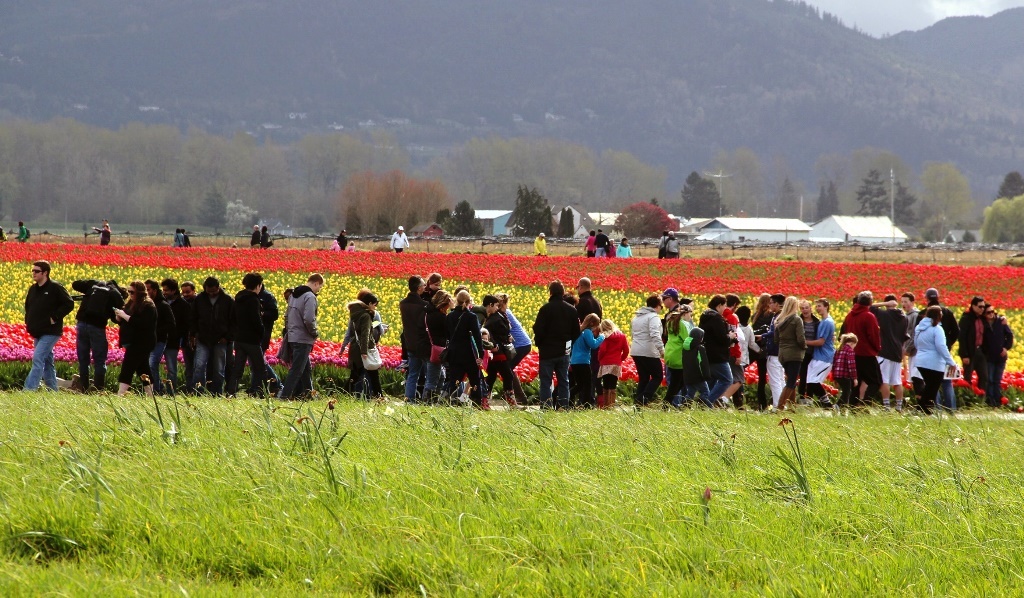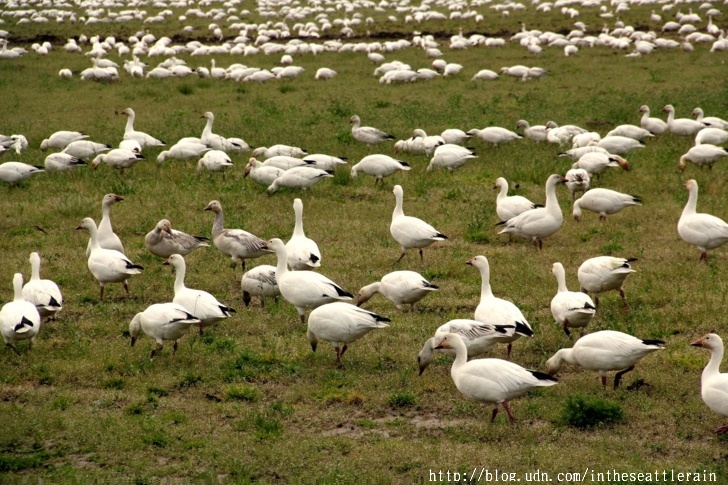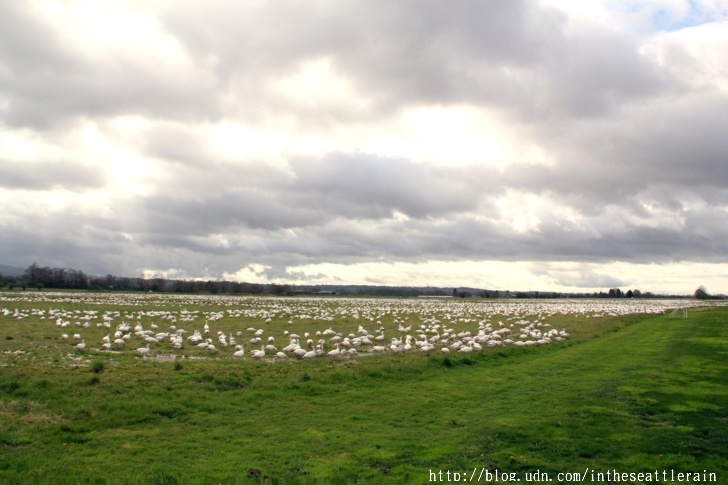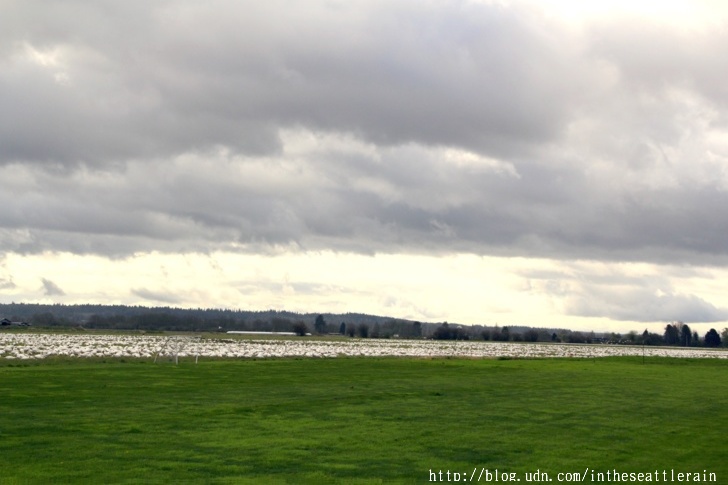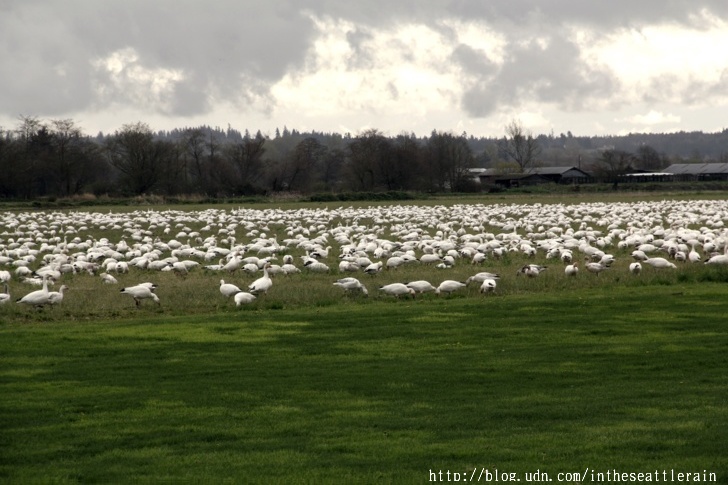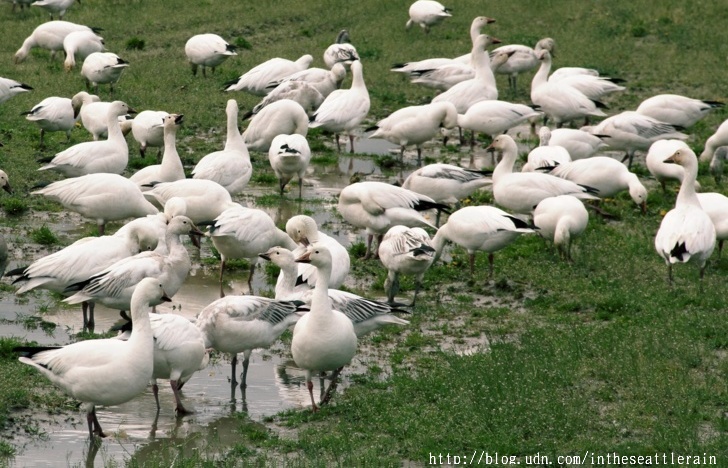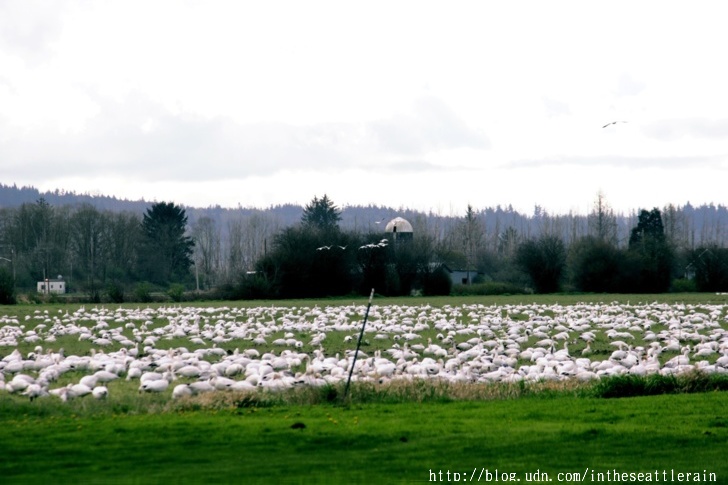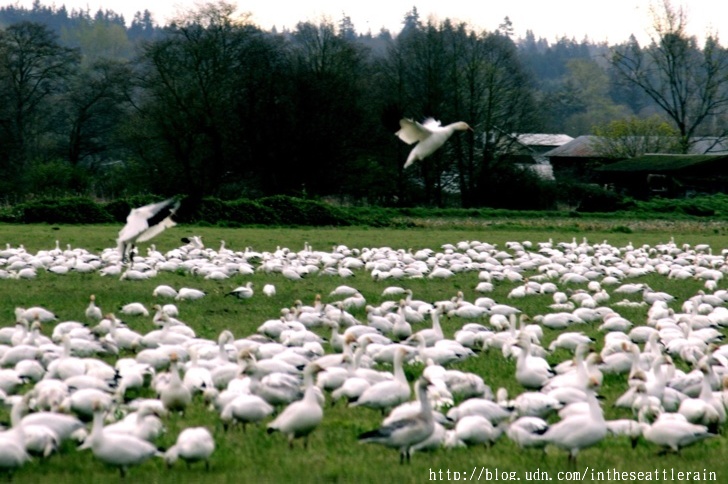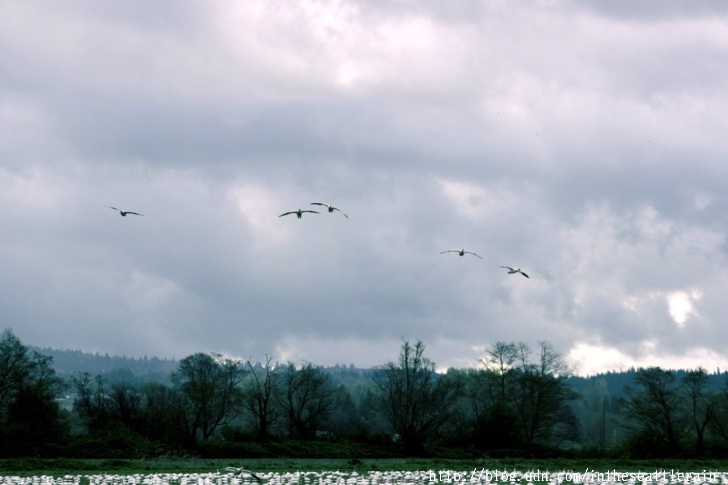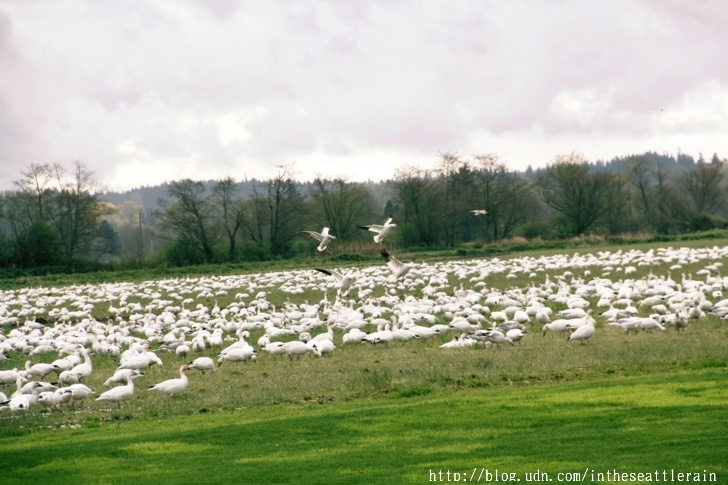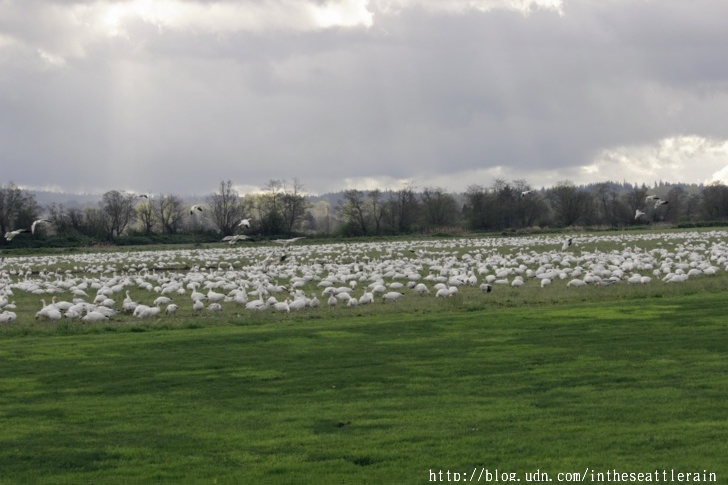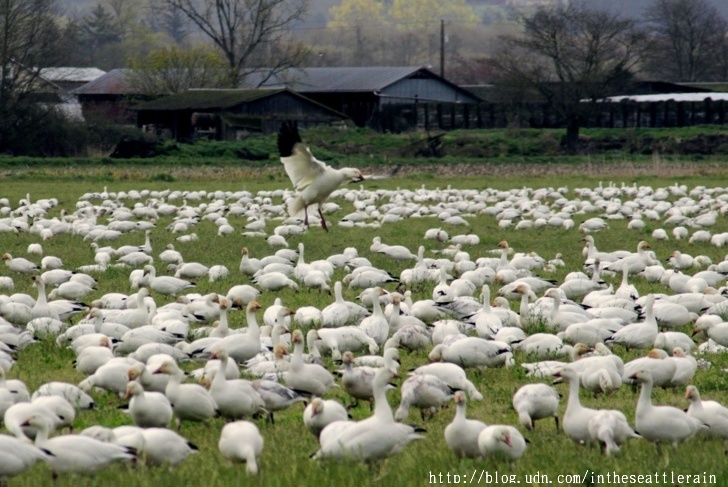

 字體:小 中 大
字體:小 中 大 |
|
|
|
| 2015/03/30 05:34:25瀏覽1083|回應17|推薦54 | |
|
到史蓋吉河谷平原Skagit Valley去賞鬱金香﹐這幾年與華大賞櫻之行已經成了春遊傳統。而每年都會遇見雪雁Snow Geese。 女兒帶著我們祖孫三人這樣行走自有深意。一方面為兒女拍幾張照片留為成長紀錄﹔再方面是因為老媽要寫部落格﹐尤其自從幾年前她和女婿送了一台數位相機以來﹐凡是有拍花或好玩的親子活動都要找時間迤邐成行。 網上有鬱金香網站的連接可以關切花況﹐電視台和推特﹑臉書都有最新報導﹐星期六雖然是個陰天﹐女兒說﹐太晴了陽光太強反而不容易掌鏡。 清晨從西雅圖出發向北﹐南方的太陽一路尾隨﹐小朋友們一會要吃點心﹑一會要放電影…(每次長途旅行怕他們呆不住就會在車內播放映卡通影片)﹐但是最近他們玩太多三C,女兒說帶他們出來就是叫他們把眼睛從螢幕移開﹐命令他們「欣賞窗外風景」。 車子一過史蓋吉河就到了雪雁過冬的樂園! 這一片廣大的農業河谷﹐足以讓牠們放心安居幾個月。 雪雁的家鄉是俄國北極海中的一個叫弗蘭格爾島的島嶼。候鳥的特性就是到了天寒地凍之季大伙一齊往溫暖的南方飛。每年的 10 月間飛行四千公里,遷徙到加拿大卑詩省的菲沙河口,12 月再繼續往南到美國華盛頓州的史蓋基特河口過冬。
當路過加拿大時﹐雖然人們喜歡看牠們﹐卻討厭牠們隨地上廁所﹐甚至僱人來趕牠們!請參考這篇文章 snow geese。 所以雪雁繼續南飛到史蓋吉﹐這裡不但有遼闊的農田﹐收成過後的田裡留下的菜根正是雪雁的主糧﹐牠們天生吃素﹐堅硬的喙就是掘根的利器。而且﹐這邊有許多濕地﹐特別保留給雪雁﹑禿鷹﹑天鵝等禽類。 此時天空依然陰沉﹐女兒的工作伙伴有電話來﹐有緊急狀況諮詢﹐剛好看到路邊的雪雁﹐就臨時停靠在狹窄的路邊回電話﹐車子也沒熄火﹐打了blinker讓我順便搶幾張照片… 田間的溫度不高﹐風也蠻強的﹐起先拍到整片的雪雁們一邊聊天一邊忙著吃早餐﹐沒看到牠們飛翔﹐有點失望。等我回車裡換鏡頭時﹐忽然聽到一陣喧鬧!!! 唉! 拍是拍到了﹐只可惜鏡頭不夠遠﹐天不夠晴﹐時間不夠多﹐實際是我的技術欠火候! 青菜看看罷! 下一篇再說看花的事。
@ @ 附註: Snow geese Description: The Skagit-Fraser goose is the most common found in the area. It is a “white morph”, Lesser Snow Goose, all white with black wing tips, orange legs and bills. Juveniles are grey overall with dark legs. Snow Geese have a dark patch on the side of the bill that makes it appear to be open or grinning ( a “grin patch”). There are two subspecies of Snow Goose - the Greater and the Lesser Snow Goose which vary in size. Adult Snow Geese are approximately 28 inches tall - have a wing span of 53 inches - and weighs just over 5 pounds. Juveniles have dusky upper-parts with grayish legs. Diet: Snow Geese feed almost exclusively on plant material. They are dependent upon intertidal marsh vegetation. In winter , waste grain from diked agricultural fields becomes their primary food source using cover crops such as winter wheat and pasture areas. Life Cycle: The life span of a Snow Goose in the wild is about eight years. Long-term breeding pairs bonds are usually formed in the second year, although breeding doesn’t typically start until the third year. The female selects a nesting site on high ground and then builds the nest. The nest is a shallow depression lined with plant material and may be used from year to year. After the female lays the first of three to five eggs, she lines the nest with down. Incubation lasts from 22 - 25 days, and the young leave the nest within a few hours after hatching. Both parents tend the young, but they feed themselves. After 42-50 days they can fly, but will remain with their family until they are two or three years old. Conservation Status: The Snow Goose population plummeted to less than 3,000 birds in 1900, but has made a strong a recovery since then. Many populations have increased to the point that they are causing management concerns. The Snow Goose is one of the most abundant species of waterfowl in the world, with a population close to 7,000,000 (7 million!). This recovery can be attributed to their ability to take advantage of previously unexploited food sources on migration routes and wintering grounds, Because of their practice of tearing vegetation out of the ground, they are destroying their own habitat in some these areas. Snow Geese are widely hunted (October to late January in Washington State), but more control measures may need to be taken in the future as the population continues to grow beyond an environmentally sustainable number. @@@
|
|
| ( 創作|散文 ) |



